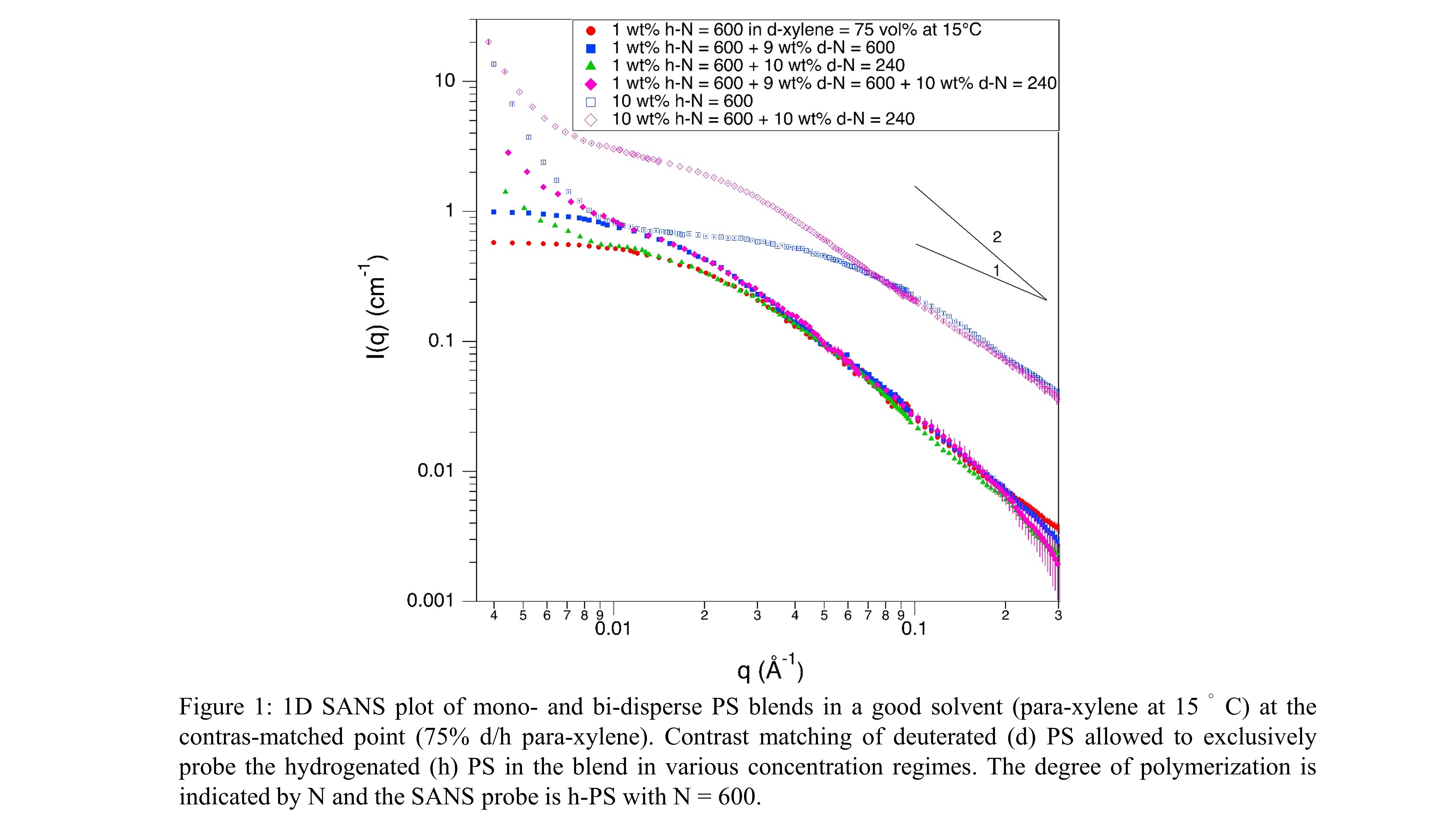2020 Virtual AIChE Annual Meeting
(650c) Polymer Conformation Studies of Model Bimodal Polystyrene Blends in Solution
Authors
Contrast matching of deuterated PS allowed to exclusively probe the single-chain conformation of hydrogenated PS in the blend in various concentration limits and solvent quality using small-angle neutron scattering (SANS). In a dilute solution, as shown in Figure 1, the single-chain conformation was investigated using the high-q slope of intensity characterizing chain statistics and the radius of gyration (Rg0). The dilute polymer conformation depends on the solvent quality with Gaussian statistics in a theta solvent (cyclohexane) and expansion of chains in a good solvent (para-xylene). Upon crowding the single chain with mono-dispersed polymers, the Rg increases depending on the Mw probably due to pronounced excluded volume interactions. In the semi-dilute regime, the blob concept describes the overlapping chains. For length scale smaller than the blob size, which corresponds to the inflection point in intermediate q in Figure 1, the dilute solution conformation statistics is retained. At a larger length scale, the interaction of overlapping chains is believed to mitigate the repulsive excluded volume interactions, and therefore, the driving force to expand the chain conformation is possibly suppressed. This is expected to lead to a reduction of the blob size with increasing concentration in the mono-dispersed polymer solution in the good solvent conditions. At length scales larger than the blob size, the Gaussian chain statistics is retained. As expected, no significant changes in the chain statistics at the blob length scale are observed in the theta solvent conditions.
For bi-disperse polymer solutions in the semi-dilute regime, we hypothesize that the center-of-mass entropy of mixing bi-disperse Mw chains may be comparable to the entropy of overlapping blobs. This mixing of bi-disperse Mw is expected to drive the expansion of chains when compared to chain conformation in mono-disperse solution and a simultaneous reduction in the blob size, respectively (discerned from Figure 1). The underlying phenomena for the conformational changes at various length scales is being investigated within the framework of random phase approximation and/or Polymer Reference Interaction Site Model (PRISM) theories. The experimental methodology and the findings under quiescent conditions will lay the groundwork to in-situ investigate elevated flow-induced structural changes in bimodal polymer solutions, and thus optimize their macroscopic rheological behavior under industrially relevant conditions.
